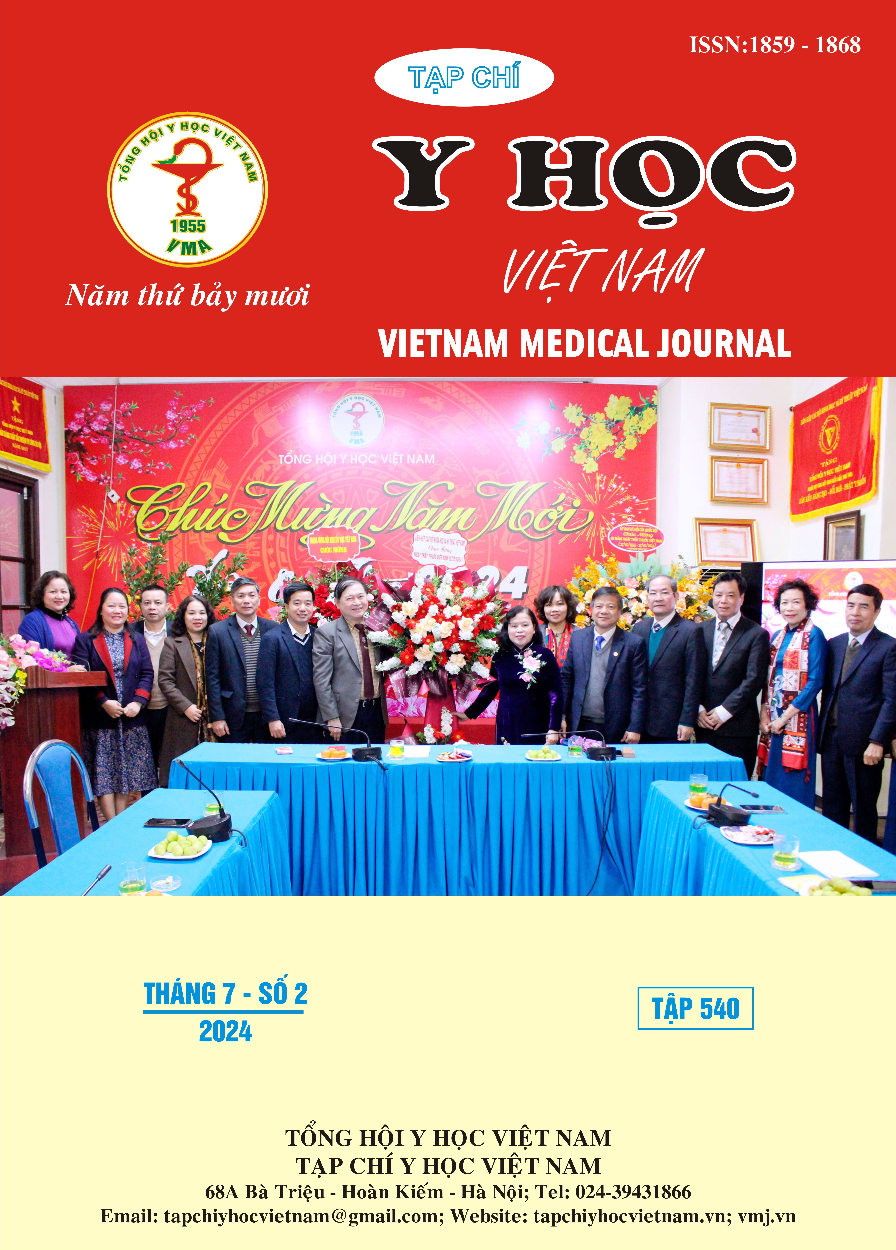CLINICAL, PARACLINICAL CHARACTERISTICS AND OUTCOMES TREATMENT OF PREECLAMPSIA PATIENTS AT NAM DINH OBSTETRICS AND GYNECOLOGY HOSPITAL IN 2023
Main Article Content
Abstract
Objectives: Examine clinical and paraclinical characteristics and evaluate treatment outcomes of women diagnosed with preeclampsia at Nam Dinh Obstetrics and Gynecology Hospital from January 2023 to June 2023. Research method: Retrospective cross-sectional description. Results: There were 62 patients took part in the research. The average age of the subjects was 29.87±7.09 years old; mainly the age group 21-55, which accounts for 69.4%. Most patients were pregnant for the first, accounting for 46.8%. Main clinical symptoms: hypertension (100%), edema (48.4%); paraclinical symptoms: Proteinuria (53.2%). Antihypertensive medications were needed either by themselves or in conjunction with other antihypertensive medications in 87.1% of cases. 71% of cases had cesarean section and 90.3% of cases had no complications after treatment. Conclusion: Complications in the treatment of preeclampsia account for a small percentage and cesarean section is the main treatment method of preeclampsia at Nam Dinh Obstetrics and Gynecology Hospital.
Article Details
Keywords
preeclampsia, cesarean section, treatment of preeclampsia.
References
2. V. L. Bilano, E. Ota, T. Ganchimeg, et al. (2014), "Risk factors of preeclampsia/eclampsia and its adverse outcomes in low- and middleincome countries: a WHO secondary analysis", PLoS One, 9 (3), pp. e91198
3. B. W. J. Mol, C. T. Roberts, S. Thangaratinam, et al. (2016), "Preeclampsia", Lancet, 387 (10022), pp. 999-1011.
4. Hà Thị Tiểu Di (2014), "Nghiên cứu bệnh lý tiền sản giật nặng-sản giật và kết quả điều trị tại Bệnh viện Phụ sản-Nhi Đà Nẵng", Tạp chí Phụ sản, 12 (3), tr. 83-87.
5. Guideline, N. I. C. E. (2019). Hypertension in pregnancy: diagnosis and management. london: National Institute For Health and Care Excellence (UK; 2019. Available from: https://www. ncbi. nlm. nih. gov/books/NBK546004.
6. E. M. Xenakis, J. M. Piper, N. Field, et al. (1997), "Preeclampsia: is induction of labor more successful?", Obstet Gynecol, 89 (4), pp. 600-3.
7. X. Dong, W. Gou, C. Li, et al. (2017), "Proteinuria in preeclampsia: Not essential to diagnosis but related to disease severity and fetal outcomes", Pregnancy Hypertens, 8 pp. 60-64.
8. Nguyễn Viết Tiến, Nguyễn Thanh Hà (2017), "Kết quả xử trí tiền sản giật tại Bệnh viện Phụ Sản Trung Ương trong năm 2015", Tạp chí Phụ sản, 15 (2), tr. 24-29.
9. L. H. Kim, Y. W. Cheng, S. Delaney, et al. (2010), "Is preeclampsia associated with an increased risk of cesarean delivery if labor is induced?", J Matern Fetal Neonatal Med, 23 (5), pp. 383-8.
10. Lê Thiện Thái (2010), Nghiên cứu ảnh hưởng của bệnh lý Tiền sản giật lên thai phụ và thai nhi và đánh giá hiệu quả của phác đồ điều trị, Luận án tiến sĩ Y học, Trường Đại học Y Hà Nội, Hà Nội.


